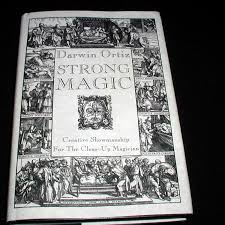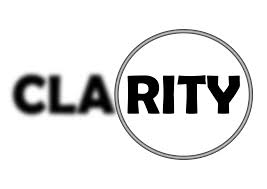As magicians, our ultimate goal is to entertain (should this not be true to you reading this, might I suggest a change in profession/hobby). In order to be successful at this goal it is imperative that our audiences understand what our magic is all about. We need to make sure that each effect we do is received in the manner in which we delivered it. Yes, I am talking about clarity.
Google defines clarity as “the quality of being coherent and intelligible.” Being clear in our instructions and the way in which we give over our magic is an integral part in our goal to entertain. The last thing we want is for our spectator(s) to watch a trick that you have spent hours practicing and a lot of time and effort in setting up, only to be disappointed because you never explained yourself clearly and therefore the spectator completely missed the climax and the warm-fuzzy feeling they would have gotten from witnessing the true magic that is you.
So what are some of the steps we should take in assuring clarity?
Before we get to the part of delivering your patter and trick effectively and clearly, we need to actually establish if our patter is clear and if the direction of the trick is clear.
Darwin Ortiz in his book Strong Magic discusses the idea of clarity.  He says “What is really essential for strong magic is not simplicity of effect, but clarity of effect.” (Ortiz, 30 ; 1994). Clarity does not equal simplicity. A simple transposition will not make sense if it is not clear. Similarly a floating piece of money that jumps around a card box, where the construction is very complex; the presentation needs to be clear in order for that effect to be understood.
He says “What is really essential for strong magic is not simplicity of effect, but clarity of effect.” (Ortiz, 30 ; 1994). Clarity does not equal simplicity. A simple transposition will not make sense if it is not clear. Similarly a floating piece of money that jumps around a card box, where the construction is very complex; the presentation needs to be clear in order for that effect to be understood.
Ortiz spends some time on the topic of clarity and I will summarise what he is saying and hopefully this will aid in our magic becoming clearer.
First, Ortiz suggests writing down all the tricks that you do and under each one, in 3 sentences or less write a summary of the effect. Actually grab a pen and paper and write them down. Go now please. Don’t worry, I’ll wait…
Now that you have written your effect summaries, perform each effect and then look back at the summary. You might find that you need to change a thing or two but ultimately you want to end up with the essence of the trick on that piece of paper.
The next step is looking at the summaries and making sure that when the spectator sees the effect, they are interpreting it how you want them to. There are only a few effects where without voice they can be understood only one way. Most tricks require patter. For example, you are doing an ambitious card routine; who is causing the card to come to the top? Is it the snap or magical move of the magician or is it a gesture from the spectator? Is it a word, a relevant time frame? A phrase? Do you get the idea?
The next bit is to look at your patter and see where the emphasis lies. Are you emphasising the important aspects of the effect? Where you put emphasis on shows what is important. In a pick-a-card trick, are you spending more time on the aspect of losing a card in the deck or on the aspect of finding it? Is the trick about finding the location of the card or making sure it’s superbly lost and can’t be found? Now go back to your patter and get rid of any action, word, phrase, or sentence that does not contribute to the essential effect that you are creating.
Patter informs the spectators what is about to happen; paints a story for the spectators to grab onto. The last thing we want is to burden our spectators by making them work, and what is the type of work that we hate doing? Mental work. If your patter is structured in such a way where the spectator has to actually think and you’re leading them down convoluted pathways, then they will get lost and your effect and hard work will be all for naught. It will also piss them off!
When it comes to designing our tricks, we want to make things as easy as possible not only for us but for our spectators. If we clutter our patter and tricks, it will not only cause confusion but it could also make the spectators upset for either paying for a magic show and instead not understanding a single part therefore ruining their evening/day; or wasting time and energy in trying to follow the magician’s stories.
I spent time working through this process and it was a huge eye-opener for me to see what clutter was surrounding the tricks I get paid to do. I hope you will gain as much benefit from the exercise as I have. Good luck!
Ortiz, D. (1994). Strong Magic. Ortiz Publications. United States of America.

